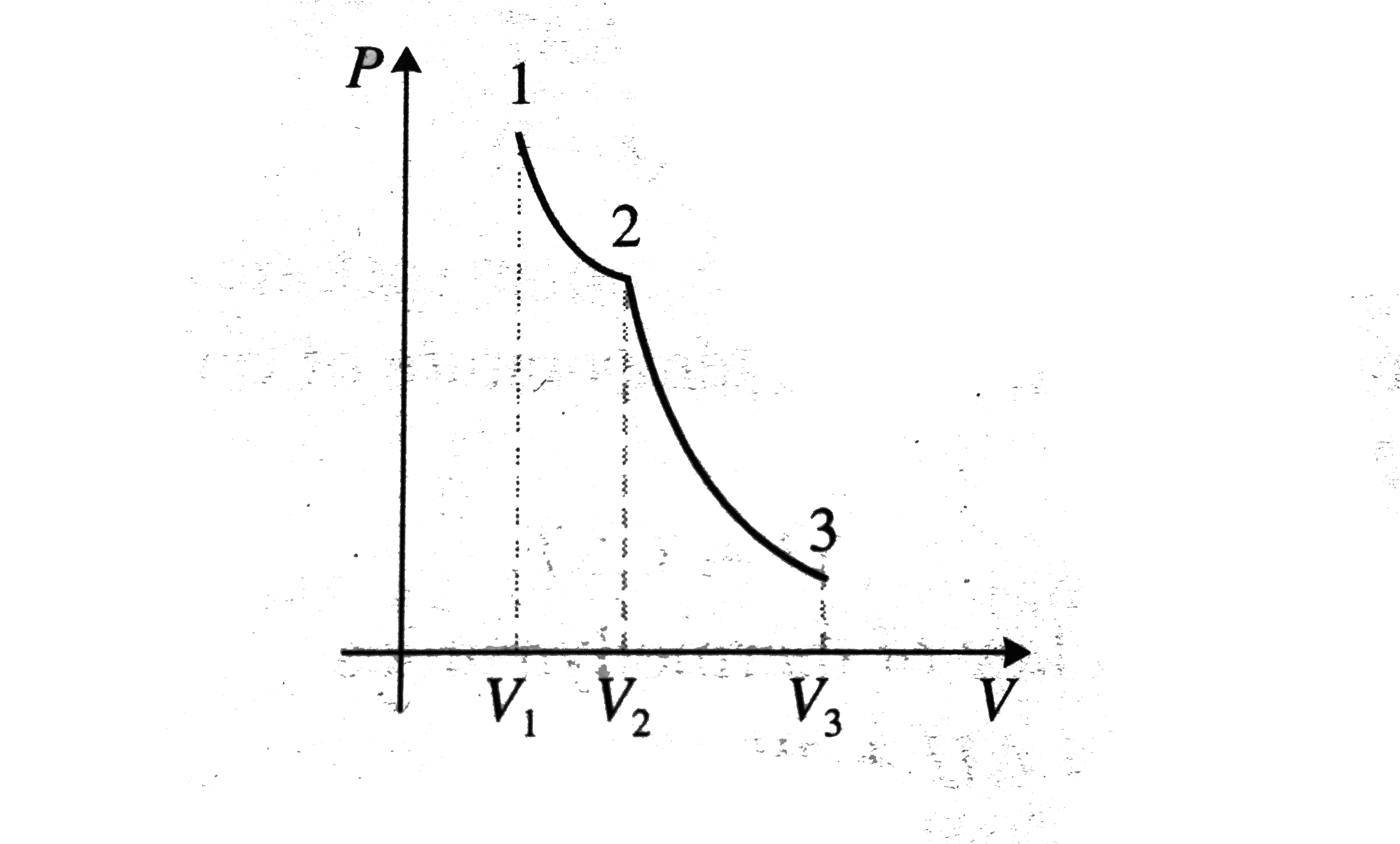In an adiabatic process, volume is doubled then find the ratio of final average relaxation time & initial relaxation time. Given CpCv=γ
12
2
(12)γ
(2)γ+1/2
The correct Answer is:NONE
To solve the problem, we need to find the ratio of the final average relaxation time (τf) to the initial relaxation time (τi) in an adiabatic process where the volume is doubled. We are given that CpCv=γ.
1. Understanding Relaxation Time:
The relaxation time (τ) is directly proportional to the volume (V) divided by the square root of the temperature (T):
τ∝V√T
2. Adiabatic Process Relation:
In an adiabatic process, the relationship between pressure (P), volume (V), and temperature (T) can be expressed as:
PVγ=constant
From the ideal gas law, we also know that:
PV=nRT⟹T=PVnR
3. Expressing Temperature in Terms of Volume:
For an adiabatic process, we can derive that:
T∝1Vγ−1
This means that temperature is inversely proportional to the volume raised to the power of γ−1.
4. Substituting Temperature into Relaxation Time:
We can substitute this expression for temperature into the equation for relaxation time:
τ∝V√T∝V√1Vγ−1=Vγ−12V=Vγ+12
5. Finding Initial and Final Relaxation Times:
Let Vi be the initial volume and Vf=2Vi be the final volume (since the volume is doubled). Thus:
τi∝Vγ+12i
τf∝(2Vi)γ+12=2γ+12Vγ+12i
6. Calculating the Ratio:
Now, we can find the ratio of the final relaxation time to the initial relaxation time:
τfτi=2γ+12Vγ+12iVγ+12i=2γ+12
Final Result:
The ratio of the final average relaxation time to the initial relaxation time is:
τfτi=2γ+12
The relaxation time (τ) is directly proportional to the volume (V) divided by the square root of the temperature (T):
τ∝V√T
In an adiabatic process, the relationship between pressure (P), volume (V), and temperature (T) can be expressed as:
PVγ=constant
From the ideal gas law, we also know that:
PV=nRT⟹T=PVnR
For an adiabatic process, we can derive that:
T∝1Vγ−1
This means that temperature is inversely proportional to the volume raised to the power of γ−1.
We can substitute this expression for temperature into the equation for relaxation time:
τ∝V√T∝V√1Vγ−1=Vγ−12V=Vγ+12
Let Vi be the initial volume and Vf=2Vi be the final volume (since the volume is doubled). Thus:
τi∝Vγ+12i
τf∝(2Vi)γ+12=2γ+12Vγ+12i
Now, we can find the ratio of the final relaxation time to the initial relaxation time:
τfτi=2γ+12Vγ+12iVγ+12i=2γ+12
The ratio of the final average relaxation time to the initial relaxation time is:
τfτi=2γ+12
Topper's Solved these Questions
Similar Questions
An ideal gas is in a container of volume V0 at pressure P0 If the same amount of gas is in container of volume 3V0 at pressure P0. then the ratio of final average translational kinetic energy to the initial average translational kinetic energy of the gaseous molecule is
View SolutionThe volume of an ideal gas (γ=1.5) is changed adiabatically from 4.00 liters to 3.00 liters . Find the ratio of (a) the final pressure to the initial pressure and (b) the final temperature to the initial temperature.
View SolutionUnder an adiabatic process, the volume of an ideal gas gets doubled. Consequently the mean collision time between the gas molecule changes from τ1 to τ2 . If CpCv=γ for this gas then a good estimate for τ2τ1 is given by :
View SolutionDuring an adiabatic process, the pressure of a gas is found to be proportional to the cube of its absolute temperature. The ratio CP/CV for the gas is
View SolutionDuring an adiabatic process, the pressure of a gas is found to be proportional to the cube of its absolute temperature. The ratio CP/CV for the gas is
View SolutionDuring an adiabatic process, the pressure of a gas is found to be proportional to the cube of its absolute temperature. The ratio CP/CV for the gas is
View SolutionOne mole of a perfect gas, initally at a pressure and temperature of 105N/m2 and 300 K, respectively, expands isothermally unitl its volume is doubled and then adiabatically until its volume is again doubled. Find final pressure and temperature of the gas Find the total work done during the isothermal and adiabatic processes. Given γ=1.4. Also draw the P-V diagram for the process.

View SolutionFigure shows an adiabatic cylindrical tube of volume (V0) divided in two parts by a frictionless adiabatic separator . Initially, the separator is kept in the middle, an ideal gas at pressure (P1) and the temperatures (T1) is injected into the left part and the another ideal gas at pressures (P2) and temperature (T2) is injected into the right part. (CpCv=γ) is the same for both the gases. The separator is slid slowly and is released at a position where it can stay in equilibrium. Find
(a) the volumes of the parts,
(b) the heat given to the gas in the left part and
(c) the final common pressure of the gases.

View SolutionTwo moles of helium gas(λ=5/3) are initially at temperature 27∘C and occupy a volume of 20 litres. The gas is first expanded at constant pressure until the volume is doubled. Then it undergoes an adiabatic change until the temperature returns to its initial value.
(i) Sketch the process on a p-V diagram.
(ii) What are the final volume and pressure of the gas?
(iii) What is the work done by the gas ?
View SolutionTwo moles of helium gas(λ=5/3) are initially at temperature 27∘C and occupy a volume of 20 litres. The gas is first expanded at constant pressure until the volume is doubled. Then it undergoes an adiabatic change until the temperature returns to its initial value.
(i) Sketch the process on a p-V diagram.
(ii) What are the final volume and pressure of the gas?
(iii) What is the work done by the gas ?
View Solution
